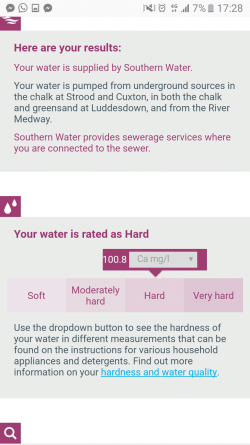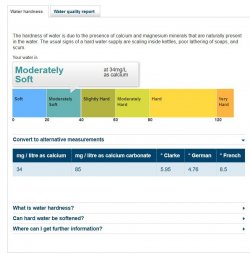It seems that most UK water companies use mg/l Ca as their default unit. Some, like mine, also have 'convert to other units' button.
I use this website to convert to and from units not in TFF's own calculator
https://www.cactus2000.de/uk/unit/masswas.shtml
My son used to work as an analyst for a water testing company. He explained to me that what water companies call hardness is actually a measure of all the divalent metal ions present in the water. This is mostly calcium, with some magnesium and trace amounts of other divalent metal ions. The water companies list the amount of each of these metal ions separately in their water quality reports.
But hardness is all of them added together, and for convenience they express hardness as if it was all calcium ions, or all calcium carbonate, or sometimes as if it was all calcium oxide.
Similarly, KH is a measure of all the buffering chemicals in the water but it is expressed as though it was all calcium carbonate. The term alkalinity is used by water companies because it is measured by adding acid to a sample of water until the pH drops to 4.5.
I'll leave Byron to comment on the suitability of tiger barbs. They may be OK at this hardness as Seriously Fish gives their hardness range as 18 to 357 ppm, but if the fish are wild caught they need the lower end of that range.



